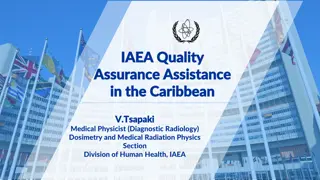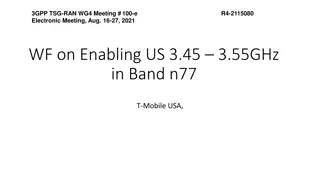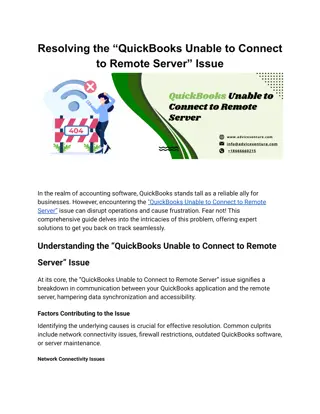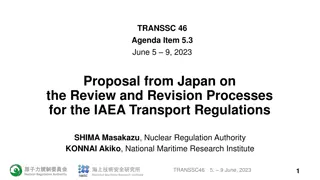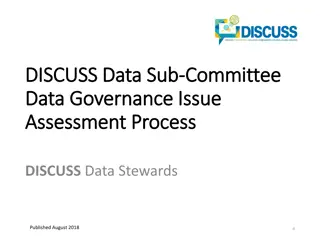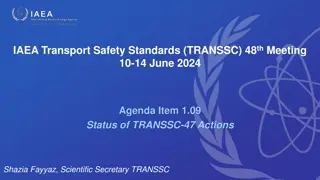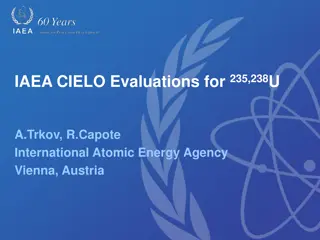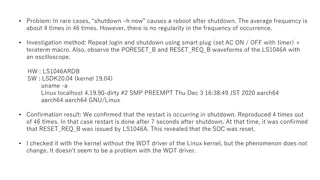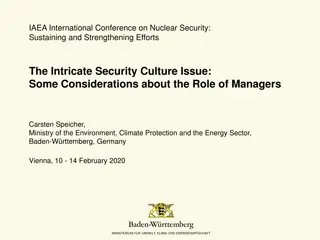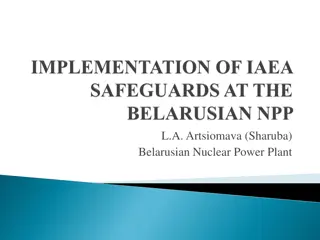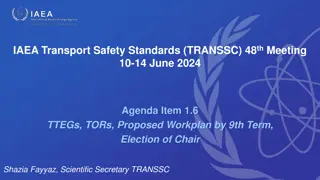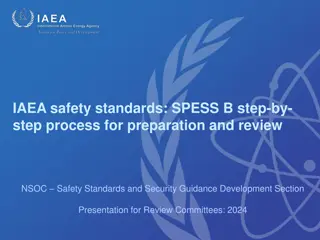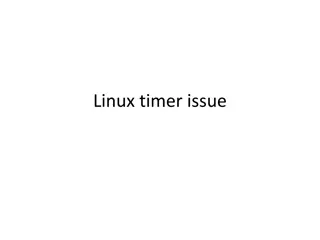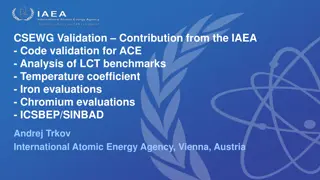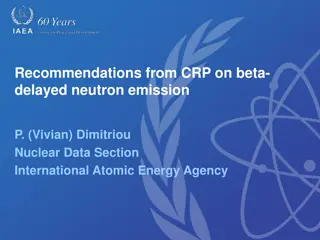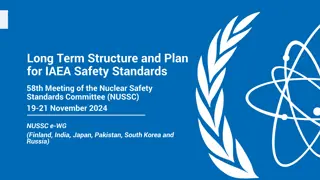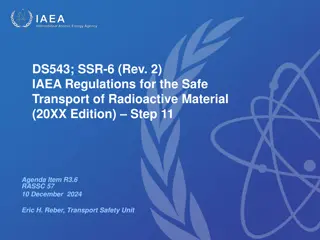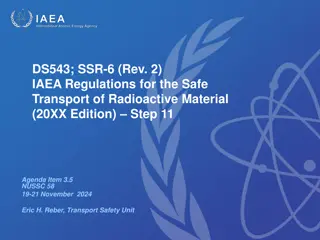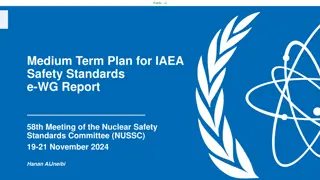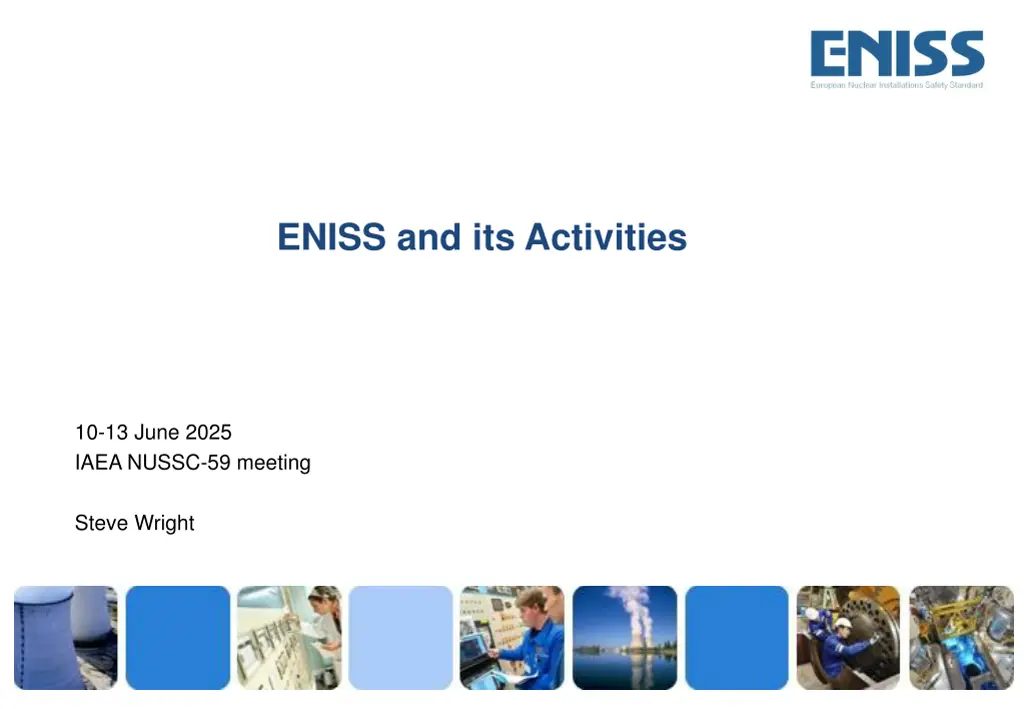
European Nuclear Installation Safety Standards: ENISS Overview and Activities
"Learn about ENISS, a body representing nuclear utilities and companies in Europe for safety standards. Explore their missions, membership, and key personnel in the nuclear energy sector." (297 characters)
Download Presentation

Please find below an Image/Link to download the presentation.
The content on the website is provided AS IS for your information and personal use only. It may not be sold, licensed, or shared on other websites without obtaining consent from the author. If you encounter any issues during the download, it is possible that the publisher has removed the file from their server.
You are allowed to download the files provided on this website for personal or commercial use, subject to the condition that they are used lawfully. All files are the property of their respective owners.
The content on the website is provided AS IS for your information and personal use only. It may not be sold, licensed, or shared on other websites without obtaining consent from the author.
E N D
Presentation Transcript
ENISS and its Activities 10-13 June 2025 IAEA NUSSC-59 meeting Steve Wright
Contents ENISS who we are Our relationships with stakeholders, particularly the IAEA & NUSSC Current ENISS Reactor Safety Group (RSG) focus on nuclear safety activities 2
ENISS representatives at NUSSC Steve Wright William Ranval Chair, ENISS Reactor Safety Group British Formerly EDF Energy UK Central Technical Organisation (34 years) ENISS Director French Head of International Nuclear Safety at EDF/Direction Technique 3
What is ENISS? European Nuclear Installation Safety Standards (ENISS) represents the nuclear utilities and operating companies from 14 European countries. Scope: Nuclear Safety, Radiation Protection and Security for the whole lifecycle including long term operation, new build, waste management and decommissioning Missions: 1. Develop common views and positions on the evolutions of the nuclear safety standards 2. Interact appropriately with the regulators and the key stakeholders to ensure that the licensees positions, through ENISS, are effectively given due consideration 3. Maintain an efficient information exchange platform between ENISS members with respect to nuclear safety matters ENISS provides technical inputs based on the experience feedback from its members, basis of its legitimacy 4
ENISS membership TVO Fortum ENISS currently represents European nuclear power plants and nuclear facilities licensees and operators from 14 European countries with nuclear power programme, including Switzerland and the United Kingdom EDF UK BGZ ENGIE CEZ SEAS EDF Paks II Swissnuclear Nuclearelectrica Kr ko Romania (Nuclearelectrica) Belgium (ENGIE) ORANO Slovakia (Slovenske Elektrarne) Bulgaria (Kozloduy NPP) Kozloduy Slovenia (Kr ko NPP) Czech Republic (CEZ) Foro Nuclear/CEN Spain (Foro Nuclear/CEN) Finland (Fortum, TVO) Sweden (Vattenfall, UNIPER) France (EDF, ORANO) Switzerland (Swissnuclear) Germany (BGZ) United Kingdom (EDF Energy) Hungary (Paks II NPP) 5
ENISS Organisation Chairman: David Ogle (EDF Energy); Vice-Chair: Ricardo Salve (Foro Nuclear/CEN) and tefan Hajd (Slovenske Elektrarne) ENISS Steering Committee Director: William Ranval ; Manager: Muriel Glibert ENISS Secretariat Chair: Bernd Lorenz (VGB) Chair: John Skegg (EDF UK) Chair: Christophe Martin (EDF) Chair: Simon Carroll (Vattenfall) Chair: Steve Wright Chair: Olli Nevander EP&R EG Emergency Preparedness and Response LNDWG Licensing of New Designs, including SMRs W. Group WDSG Waste & Decommissioning Safety Group EGRP Expert Group Radiation Protection SEG Security Expert Group RSG Reactor Safety Group IRIDM TG Climate Change Impacts TG Task Forces / Groups + the groups created for drafting statements and position papers Fire TG External Reviews TF LTO SG 6
ENISS Relationship with Stakeholders Interactions with IAEA Interactions with WENRA Interactions at EU Level Interactions with other stakeholders (ICRP, OECD/NEA, EUR, WNA) Interactions across the ENISS membership 7
RSG Activities / Relationship with Stakeholders Interactions with IAEA Since 2007, ENISS has had observer status representing the European nuclear licensees in IAEA Safety/Security Standards Committees o ENISS RSG Chair attends the NUSSC Provide comments on a selection of Safety Requirements and Guides, addressing in particular the issues of relevance to the RSG Participate in some drafting/consulting groups on safety standards and TECDOCs 8
RSG Activities / Relationship with Stakeholders Involvement with IAEA prior to this NUSSC Provide comments to IAEA on all documentation in ENISS / RSG remit o Set up review groups of several members - from RSG, from member organisations, and across ENISS WGs o Review documents and collate comments in review groups o Reach consensus position in RSG, LNDWG, etc focusing on stability, practicability and efficiency of the proposed safety documentation (consistent with a strategic objective supporting our ENISS Mission 1) Interact with IAEA TOs and SO as appropriate Same as you But we are producing our input using our broad membership of NPP operators, so we are offering a potentially different perspective 9
RSG Relationship with Stakeholders Interactions with IAEA Interactions with WENRA e.g. ENISS consulted by WENRA on revision of Safety Reference Levels, Regular engagement with RHWG Chair & Vice Chair o Interactions at EU Level e.g. ENISS consulted in frame of ENSREG works, Regular exchanges with DG ENER o Interactions across the RSG membership 10
ENISS Common Positions / Position Papers Objective of being more proactive on some topics of particular importance Strategic review carried out to identify priority topics to be covered Position papers are intended to be published and presented to stakeholders Wish to have a dialogue with regulators on the relating subjects 11
RSG Previously Published ENISS Position Papers 3 concepts: Cost benefit Analysis, Reasonably Practicable, Risk Informed ENISS Common Licensee Understanding and Principles for a Successful Approach, October 2018 Defence-in-Depth Implementation, October 2019 Principles for Developing and Implementing Safety Improvements to Existing NPPs, October 2019 Application of the Concept of Practical Elimination of Scenarios, March 2020 All available on ENISS website 12
RSG Previously Published ENISS Position Papers - 3 Concepts CBA, RP, RI - October 2018 (1 of 2) Summarises each of the three concepts of Cost-Benefit Analysis, Reasonably Practicable and Risk-Informed Sets out an ENISS perspective for a successful approach based on eight principles: 1.Investment in nuclear safety should provide significant safety improvement 2.The necessary investment for risk reduction should be commensurate with the effective safety net benefit 3.In risk informed approaches a comprehensive set of contributions should be used 4.A set of goals and criteria for the application of Cost Benefit Analysis and Reasonably Practicable should be developed continues 13
RSG Previously Published ENISS Position Papers - 3 Concepts CBA, RP, RI - October 2018 (2 of 2) Eight principles (continued): 5. Licensees and Regulators need accepted risk informed approaches and methods (with associated acceptance rules and criteria) 6. Suggested risk informed principles should be used consistently in regulatory processes 7. Cost Benefit Analysis ought to be acknowledged as an acceptable method within national regulations 8. Definition and interpretation should be clarified regarding reasonably achievable and reasonably practicable in connection with the concepts of Best Available Technology and Continuous Improvement 14
RSG Previously Published ENISS Position Papers - DiD Implementation - October 2019 This document provides an overview of the ENISS common licensee understanding and position on Defence in Depth (DiD), from the concept to its implementation with its associated requirements and practices. DiD is a powerful concept to ensure safe designs, safe operations, and support nuclear safety improvements. It has been used for decades and has evolved over time. Applying the DiD concept is a recognised international practice with general safety principles being common to regulators, licensees and designers. The details of its implementation may differ from country to country and may be plant- specific. ENISS members share the view that the implementation should account for reasonable practicability and that there are some limits to be appropriately taken into account concerning the requirements of independence across the DiD levels 15
RSG Previously Published ENISS Position Papers - Safety Improvements - October 2019 (1 of 2) This document provides an overview of the ENISS common licensee understanding of what constitutes good practice when developing and implementing safety improvements during the lifetime of an NPP Six Principles identified: 1. The development of Reasonably Practicable risk informed safety improvements under a framework of periodic safety review and continuous improvement is best achieved where a mature, outcome focused regulator and licensee environment exists 2. The licensee s portfolio of safety improvements should be adaptable to changing circumstances throughout the lifecycle of the plant continues .. 16
RSG Previously Published ENISS Position Papers - Safety Improvements - October 2019 (2 of 2) Six Principles (continued): 3. Each safety improvement initiative follows a proportionate development process through which options are proposed and evaluated as the design is progressed from identification of an issue, through options definition, concept design, detailed design and implementation 4. Safety improvements must be evaluated against a thorough understanding of the original balanced Design Intent and current safety philosophy to avoid unintended consequences and safety disbenefit 5. The remaining life of the station must be factored into the optimal solution for a particular safety issue 6. Safety improvements should be implemented on Reasonably Practicable timescales, prioritised according to relative safety benefit and taking into account reasonable constraints 17
RSG Previously Published ENISS Position Papers - Practical Elimination - March 2020 (1 of 4) This document provides the ENISS views on the demonstration expected to meet the EU Nuclear Safety Directive requirements in its article 8a and on how it can be supported by the application of the concept of Practical Elimination of scenarios This is summarised through key definitions and seven general principles which are recommended to be used as a basis for a widely shared understanding (shown on following slides) 18
RSG Previously Published ENISS Position Papers - Practical Elimination - March 2020 (2 of 4) Key definitions used in this document Two distinct categories of radioactive releases should be defined to clarify the terminology: o Large and Early radioactive Releases (LER) o Large and Late radioactive Releases (LLR) The term Practically Eliminated is used to mean physically impossible or extremely unlikely to occur with a high degree of confidence The concept of Practical Elimination applies to scenarios (groups of sequences characterised by a specific containment failure mode) The term avoidance applies to the overall risks of early radioactive releases and large radioactive releases 19
RSG Previously Published ENISS Position Papers - Practical Elimination - March 2020 (3 of 4) Seven Principles identified: 1. Demonstration of avoidance of LER and LLR can rely on different approaches commensurate to the risks to be discarded, including the application of the concept of Practical Elimination of scenarios 2. Practical Elimination of scenarios is a concept for new nuclear power plants applied from the onset of the design process to support the safety goal of avoidance of LER and LLR 3. For existing plants, the notion of Practical Elimination of scenarios is not mandatory but could be used to help identify reasonably practicable safety improvements intended to avoid LER and LLR through the processes for continuous improvement or Periodic Safety Review continues .. 20
RSG Previously Published ENISS Position Papers - Practical Elimination - March 2020 (4 of 4) Seven Principles (continued): 4. Demonstration of avoidance of LER and LLR credits all the relevant lines of defence as well as the analyses of the Design Basis and Design Extension Conditions, and the Probabilistic Safety Analysis 5. Practically eliminated scenarios are excluded from DBC and DEC analyses, i.e. their consequences are not required to be mitigated because their occurrence is prevented 6. The demonstration of avoidance of LER and LLR should be based on a balanced use of deterministic and/or probabilistic studies, including sensitivity analyses associated methodologies are developed on a case-by-case basis 7. Early dialog with the Regulator is recommended to discuss and agree on a structured and detailed approach to avoid LER and LLR, including the application of the concept of Practical Elimination of scenarios 21
RSG Current Focus Technical Matters Climate Change Impact Integrated Risk-Informed Decision Making (IRIDM) Long-Term Operation Level 3 PSA Safety standards for existing NPPs in a changing landscape with innovative technology (with ENISS LNDWG) Maintaining good relationships with stakeholders Contributing to the NUSSC and other relevant IAEA activities 22
RSG View on Important IAEA Standards Question often posed to NUSSC Members & Observers ENISS RSG Response Many Reasons ENISS members position Plants in various stages including construction, operations (underpinned by safety cases), PSR, LTO, and decommissioning Also considering the future and innovative technology Documents are of interest to us Capture good practices of relevance to ENISS members Act as prime references to OSART reviews May influence evolutions in regulatory frameworks 23
Thank you! www.eniss.eu

